There’s a funny phrase used by Australian alpaca farmers: Berserk Male Syndrome. It describes the behaviour prevalent in animals handled too much by humans when they’re young. “They don’t understand boundaries, they chase you. I’ve seen the aftermath,” says alpaca breeder Angela Smith, co-owner of One Tree Hill Alpaca Stud in Murrumbateman, between Canberra and Yass in South East NSW.
It’s one of many things she and husband Matthew have learned in the decade since she went to buy a goat to keep the grass down on their just-purchased property – and instead came home with a pair of alpacas.
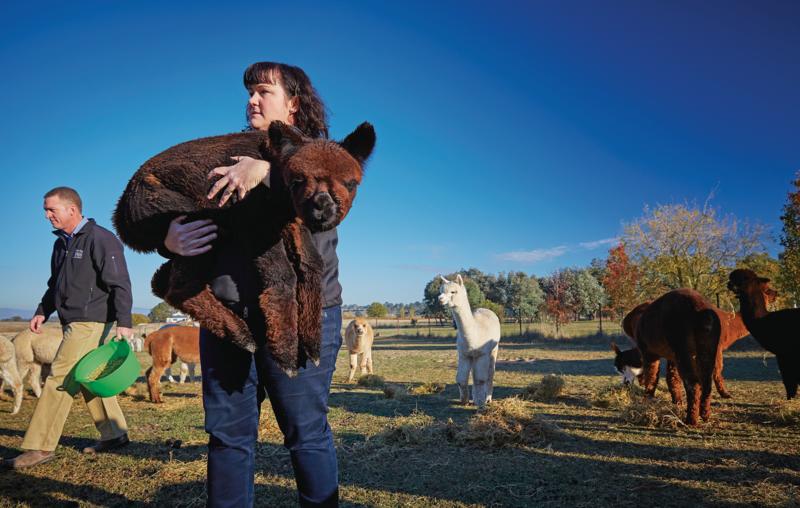 Angela and her husband Matthew tend to their herd.
Angela and her husband Matthew tend to their herd.
In that time, Angela has grown the herd to 70 mainly breeding females, producing and selling luxury alpaca fibre and yarn. She has also established a local reputation for her hand-dyed yarns that she would like to take global.It’s this export focus which triggered a rebranding of her alpaca products this year from One Tree Hill to something more purposely synonymous with Australia – Blackwattle Alpaca Yarn and Fibre.
Although demand for alpaca fleece – particularly from China, where it is used to produce doonas, carpets and fine clothing – is far outstripping supply, the industry remains something of a niche. The first alpacas arrived in Australia from South America in 1989 and by 2001 there were around 40,000 animals. This year there are 200,000 animals registered to 2,300 breeders, with about 500 of those based in NSW.
*Read more about the popularity of Australia’s clean, green products and how they stack up in the international market, particularly in China.
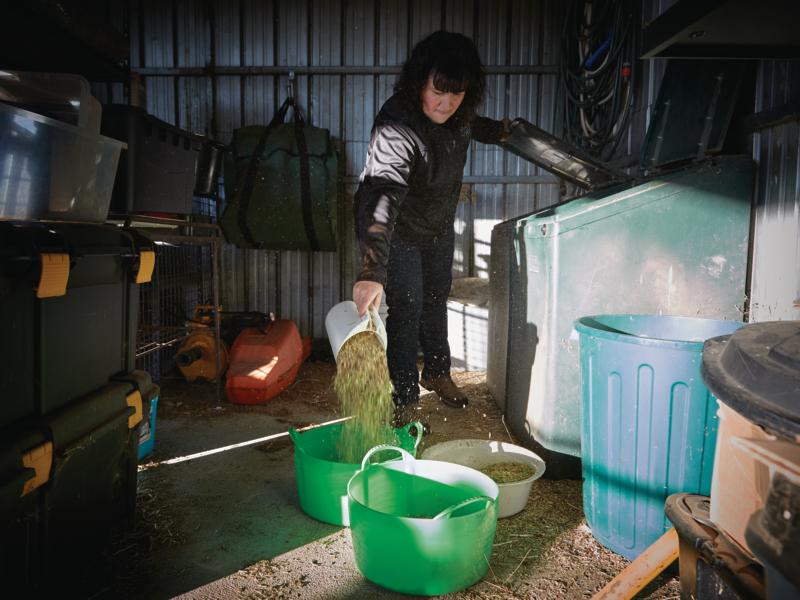 Angela Smith preparing feed of lucerne and oaten chaff mixed with alpaca pellets and cracked lupins.
EXPANDING HERD LEADS TO GROWTH OPPORTUNITIES
Angela Smith preparing feed of lucerne and oaten chaff mixed with alpaca pellets and cracked lupins.
EXPANDING HERD LEADS TO GROWTH OPPORTUNITIES
As the domestic herd size grows so too does the focus: away from breeding for shows to breeding for commercial outcomes, which means viewing the alpaca as a fleece animal. One of the numbers thrown around within the local alpaca industry as the tipping point into truly commercial scale is a national herd size of a million animals by 2021, according to the
Australian Alpaca Association (AAA).
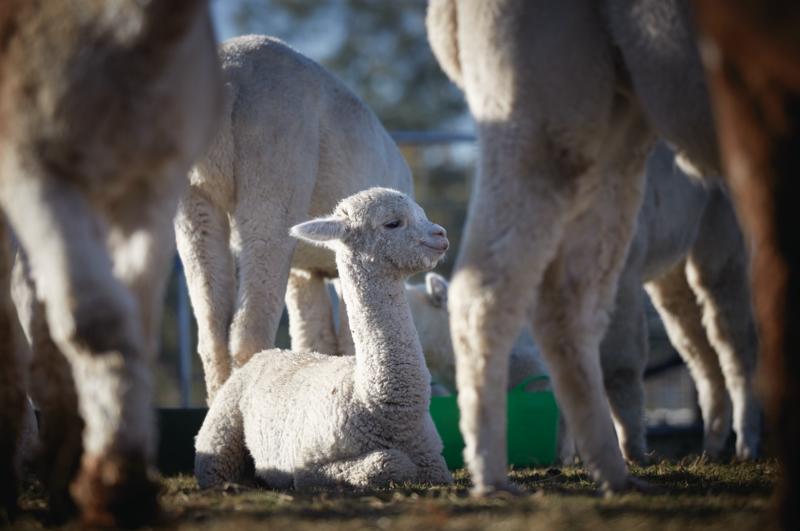 Alchemy, a cria (juvenile alpaca), will be shown at this year’s national show.
Alchemy, a cria (juvenile alpaca), will be shown at this year’s national show.
“As owners we all have to increase our herd size but, to do that, you have to have avenues to sell your fleece and your fibre,” says Angela. “There has been a lot more opportunity for that in the last couple of years than there has been previously.”
AAA president Ian Frith, owner of Millpaca and Illawarra Prime Alpaca at Berry and Binda in the South East region, says a representative from a Chinese mill told him earlier this year that the mill was running 3,000 tonnes short of alpaca fleece annually. To put that in perspective, one animal produces about 2kg of fibre a year. Angela estimates her farm processes about 1,000kg in 12 months.
STRONG SOCIAL MEDIA PRESENCE EARNS FOLLOWING FOR PRODUCERS
But how do you grow a niche industry? “That’s something I struggle with,” Angela says. “It’s something I work on quite a lot. I’m very big on social media. I have five Facebook accounts and one Instagram account.” A strong background in retail has helped – Angela worked her way up from a 15-year-old casual at Big W to being part of a regional team running a $25 million-turnover store with 300 managers and staff – as has her holistic approach to her new small business venture.
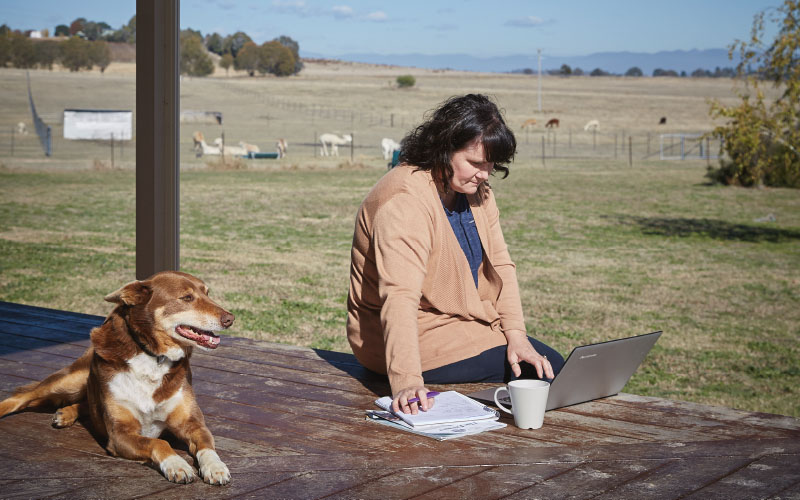 Angela with her red kelpie rescue dog Astro.
Angela with her red kelpie rescue dog Astro.
In addition to rebranding with a global market focus, Angela has this year employed a casual, opened a farm shop, added alpaca meat to her sales offerings and is having the property professionally landscaped to become an enticing setting for her planned wool and wine workshops. She has also sold a lot of dog beds – ironic, she says, given her own three dogs are asleep on the family couch – which she made from unused fibre. “When we first got alpacas we had bags of fibre and I didn’t know what to do with it, but I don’t like wasting it,” she says. Her dog beds have been popular with owners of elderly dogs as the fibre’s air bubbles offer good insulation.
MARKET INSIGHTS PROVIDE BENEFITS FOR ALPACA PRODUCERS
Understanding the customer, and knowing when to pivot to ensure you have what they want, are key to expanding a business and creating new product offerings, Angela says.She was making beanies and scarves as a “bit of a hobby” until her own “retail light bulb” moment came while observing customers at her first stall in the renowned annual Canberra Handmade market in December 2014. Although Angela was selling her finished products, customers went straight to a display of yarn on a small stand off to the side of the stall.
“They weren’t buying the finished products – they were wanting the yarn,” Angela recalls. “I watched what they went to, and I listened to what they were asking for.
”
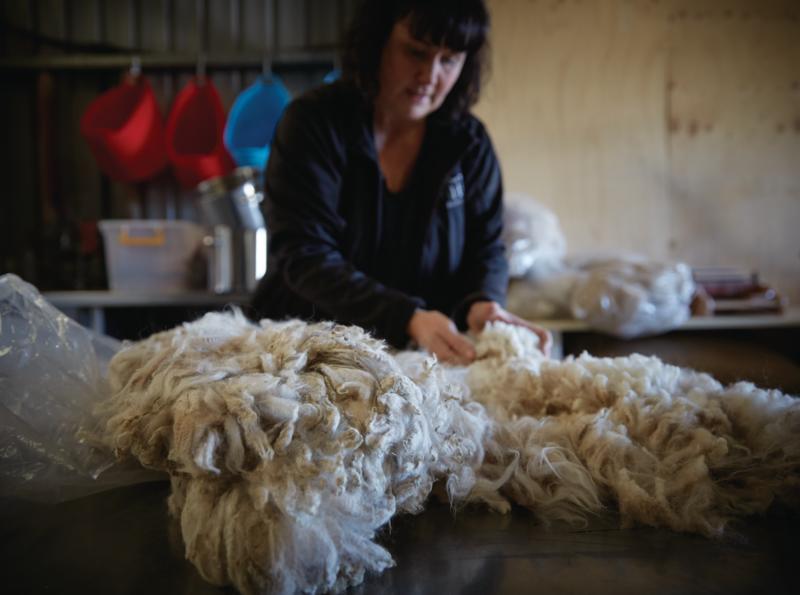 Angela checking raw skirted fleeces.
Angela checking raw skirted fleeces.
She is a new entrant into the world of knitting and crochet, and an admirer of those who can master the art. “It’s fascinating,” she says. “I don’t think they’re crafters, they’re artisans, what they can do with the fibre.” That level of work demands unique hand-dyed yarn offerings and rewards growers who offer traceability of fibre back to a single property, or a single animal.
Angela’s second light bulb moment happened at a different Canberra market. Local crochet designer Deanne Ramsay walked past and asked if Angela had 4-ply yarn, rather than the 8-ply she’d been selling. “I told Deanne we had a bit out at the farm so she came to visit but didn’t understand why we didn’t do more 4-ply yarn because it’s what everyone uses,” Angela says. “And then she said, are you on Instagram? And I said no, do I need to be? And she said, ah, yes.”
As soon as her visitor left, Angela rang the NSW mill Adagio and placed her first big order of 4-ply, then started an Instagram account that afternoon. “Since then the business has just skyrocketed because I listened to what the local designers and local knitters and crocheters wanted.”
*READ MORE: Meet the Central West beef producer James Millner who's diversified the family business and streamlined supply chains that's helping boost trade both locally and internationally.
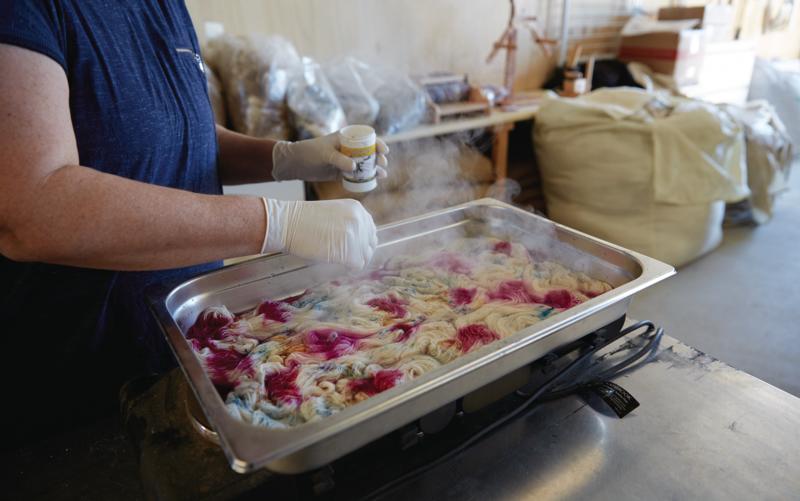 Dyeing yarn with a sprinkle dye technique combined with semi-immersion.
Dyeing yarn with a sprinkle dye technique combined with semi-immersion.
Angela believes there’s further opportunity for growth. “I have a very high expectation about this business and I know what I want to get to,” she says. She keeps an eye on international counterparts, some of whom export their own hand-dyed products to more than 270 countries, and sees no reason why Australian brands can’t do the same.
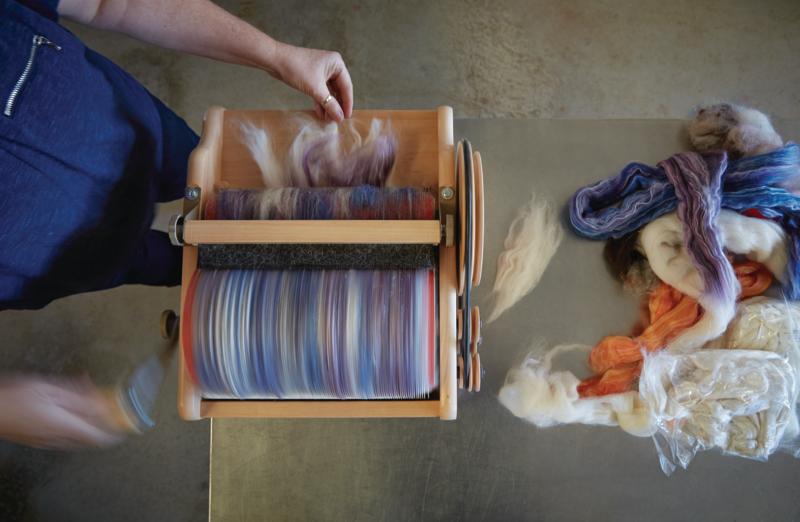 Hand-dyed silk and Merino.
Hand-dyed silk and Merino.
But ramping up a hand-dyeing operation necessarily requires a lot of hands. “I have girlfriends who come round, and I pay them in wine and chocolate. M&Ms, to be specific,” she says. She’s also begun recording her dye instructions with a plan to employing another staffer in the future.
Colour is part of what makes Blackwattle yarn so popular, although Angela says she never envisaged using the colour theory she learned years ago doing her Bachelor of Fine Arts degree to dye alpaca wool. Special releases and unique colour offerings are used as a tactical drawcard to bring visitors to see her at various events in NSW and Victoria. “I’m doing the Australian Sheep and Wool Show in Bendigo, so I’ve been trickle-feeding some of the yarn that’s not on the website onto Instagram for a reason: it gets people excited and it’s an exclusive line at the show.”
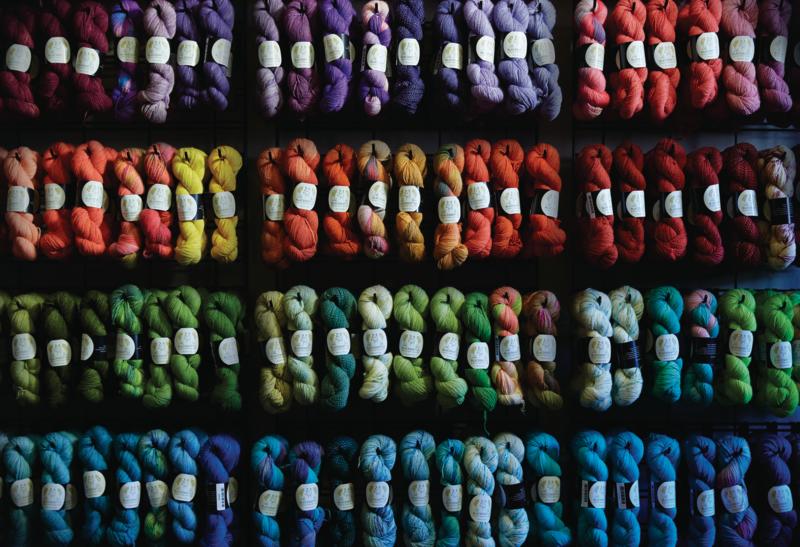 A wall of hand-dyed 4-ply alpaca yarn.
DIVERSIFYING MEANS PROFITS IN THE BANK AND MEAT ON THE TABLE
A wall of hand-dyed 4-ply alpaca yarn.
DIVERSIFYING MEANS PROFITS IN THE BANK AND MEAT ON THE TABLE
For now, Angela is busy establishing the farm shop in her farm shed, which she and husband Matthew opened in May. It stocks her Blackwattle yarn and fibre line, as well as the Alpaca Breeders Collection, a completely separate brand using natural-coloured fibres from a number of breeders.
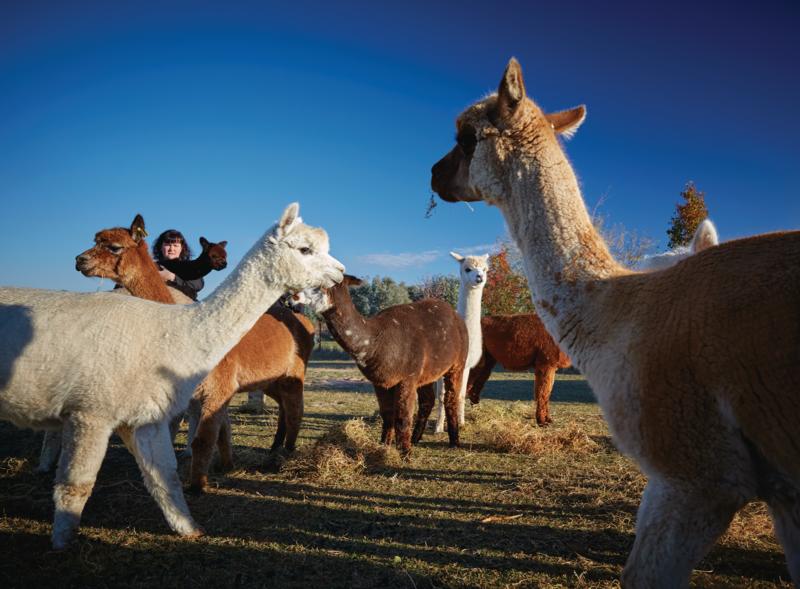 Angela holding a cria called Fifth Avenue, surrounded by other members of her herd. From left, Rosie, Toblerone (Fifth Avenue’s mother), Savannah, the first alpaca born on the property, Storm, Holly and Bling.
Angela holding a cria called Fifth Avenue, surrounded by other members of her herd. From left, Rosie, Toblerone (Fifth Avenue’s mother), Savannah, the first alpaca born on the property, Storm, Holly and Bling.
And she recently added alpaca meat from another local alpaca breeder, including sausages, koftas and salami, to the shop’s offerings. “We cooked it up at the farm shop and people who came in loved it,” she says. “Being a retailer, I thought, oh well, we’ll add that in.”
Angela believes in educating her clients, and recalls selling yarn to customers who were used to imported yarn that was itchy and scratchy.
“From one bad experience they assumed that’s what alpaca was, but I gave them a product of my own which they tried on and realised wasn’t itchy. It’s the same with the meat. We eat baby lambs and they’re cute, so there’s no reason not to eat alpacas just because they’re cute.”
It helps that alpaca meat is also tasty and quite similar to lamb in flavour. Angela intends to serve it as part of her wool and wine workshops at the farm, hoping customers will participate in a knitting or crocheting workshop or learn how to hand-dye alpaca fibre, have an alpaca lunch and taste some local wines.
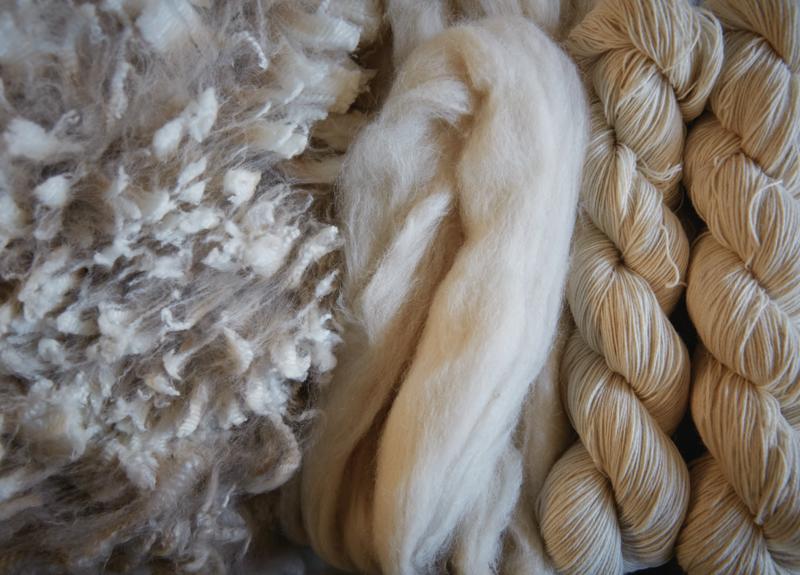 A selection of the raw yarn.
A selection of the raw yarn.
Building a level of professionalism is an intrinsic part of her plan – hence the landscaping design to make the property look less like a working farm and more like a visitor destination. And that goes for branding, too. “I do my branding globally, I don’t brand specifically for local. I think a good brand can stand on its own, whether it’s locally, state-wide, Australia-wide or globally,” she says. “You have to be very specific with your brand and stand by it and market it in a certain way.”
Ensuring brand professionalism also shows respect for the product. “We are very careful to have our property looking as good as we can when people come to visit, because it shows respect for our land, farm, animals and visitors.”
 A wall of ribbons won by One Tree Hill alpacas.
A wall of ribbons won by One Tree Hill alpacas.
FROM CRAFT TO CARCASS: THE FINANCIAL MOVE ON EVERYONE’S MIND
One of the main drivers of the commercial Australian alpaca meat industry is Ian Frith, president of the Australian Alpaca Association. He started breeding alpacas about 12 years ago and now has a herd of more than 5,000 across his two farms.
His alpaca fleece and hides are manufactured into clothing, yarn, felting and carpet and, since 2012, the carcases have also been used.
“It was about finding the third leg – we had fibre and hides, now we have added the meat,” Ian says. “The fat content of the meat is as low as 3.5%, plus it is high in iron and protein and low in cholesterol.”
Almost four years ago, Ian bought an abattoir at Milton, on the NSW South Coast, accredited to process alpaca. His alpaca meat, Illawarra Prime Alpaca, now goes to numerous wholesalers and distributors and appears on restaurant menus in the form of liver pâté, alpaca carpaccio, smoked alpaca rump, backstrap and tenderloins, neck rosettes and even burgers. He is also working with Angela Smith on retailing his alpaca meat in her farm shop at One Tree Hill.
With annual domestic sales stabilised at around 50 tonnes of meat – and set to increase by 20% this financial year – Ian is working on getting an export licence for the abattoir. “We have orders we can’t fill for the Middle East and China,” he says.
“Industry can now make money off what was once basically a waste product.
”
- 1989 The year the first alpacas arrived in Australia.
- 200,000 The national herd in 2018.
- 1 million The national herd required to be truly commercial.
- 2kg Amount of fibre from each animal per year.
- 15-20 years The life span of an alpaca.